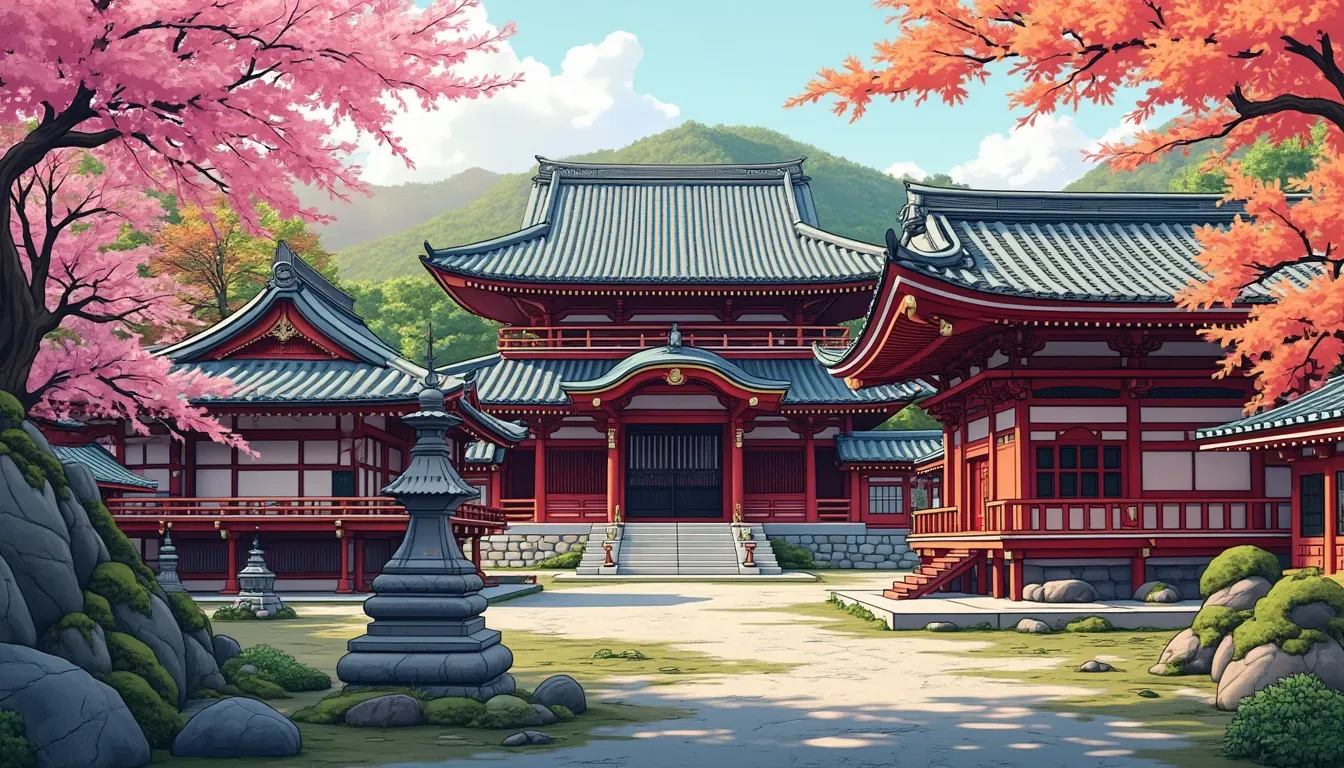Introduction
Kyoto, the ancient capital of Japan, is a city where history and spirituality converge. Renowned for its serene environment and the preservation of traditional Japanese culture, Kyoto is home to a plethora of temples, each representing a unique piece of the country’s rich tapestry of Buddhism and Shinto beliefs. This article provides an overview of Kyoto's temple landscape and delves into the fascinating histories of its three most significant temples.
Overview of Kyoto's Temples
Kyoto hosts over 1,600 Buddhist temples and numerous Shinto shrines, making it a vibrant hub of spiritual activity. These temples vary in size, architectural style, and historical significance, offering a glimpse into different eras and sects of Japanese Buddhism.
- Cultural Heritage: Many of Kyoto's temples are designated UNESCO World Heritage sites, reflecting their global cultural significance.
- Diversity of Buddhism: The temples represent various Buddhist sects, including Zen, Pure Land, and Nichiren Buddhism.
- Architectural Marvels: Each temple is a masterpiece of Japanese architecture, with intricate woodwork, exquisite gardens, and sublime sculptures.
The Essence of Temples in Kyoto
"Temples in Kyoto are not merely places of worship but are also historical archives reflecting Japan's philosophical, artistic, and ethical developments over centuries."
Pilgrimage and Tourism
Tourists flock to Kyoto not only to admire the historical structures but also to partake in contemplative activities like meditation, tea ceremonies, and seasonal festivals celebrated with much fervor.
Kiyomizu-dera: The Temple of Pure Water
Historical Background: Founded in 778, Kiyomizu-dera predates the establishment of Kyoto itself as the imperial capital. Known as the "Temple of Pure Water," it takes its name from the Otowa Waterfall, which runs beneath the main hall. Originally affiliated with the Hosso sect, it later became a part of the Kita-Hosso sect.
Significance and Features
- Architectural Wonders: Kiyomizu-dera's most iconic feature is its wooden stage that juts out from its main hall, offering stunning views of cherry and maple trees below.
- Cultural Role: It has been a major focus of pilgrimages in Japan, where people come to pray for health, success, and love.
Kiyomizu-dera remains a poignant symbol of Japanese resilience and cultural continuity.
Kinkaku-ji: The Golden Pavilion
Historical Background: Officially named Rokuon-ji, Kinkaku-ji was originally built in the 1390s as a retirement villa for the shogun Ashikaga Yoshimitsu. After his death, it transformed into a Zen temple belonging to the Rinzai Sect.
Significance and Features
- Golden Design: The top two floors of the pavilion are covered in pure gold leaf, reflecting the evolving riches and aesthetics of Muromachi period Japan.
- Zen Buddhism and Garden Design: The surrounding gardens are a classic example of traditional Japanese landscaping, designed to reproduce the utopia of the Buddhist Pure Land.
"The brilliance of Kinkaku-ji lies not just in its golden facade but also in its embodiment of Zen principles, which emphasize simplicity and harmony."
Ginkaku-ji: The Silver Pavilion
Historical Background: Constructed by order of Ashikaga Yoshimasa, the grandson of Ashikaga Yoshimitsu, Ginkaku-ji was intended to emulate the splendor of Kinkaku-ji, reflecting his wish to retire into a life of art and culture.
Significance and Features
- Cultural Hub: Though it was never plated in silver as initially intended, Ginkaku-ji became a sanctuary for numerous authors, poets, and artists, fostering the development of the Higashiyama Culture.
- Architecture and Gardens: The Zen gardens of Ginkaku-ji include the "Sea of Silver Sand" and the "Moon Viewing Platform," which remain iconic symbols of Japanese landscape design.
While not adorned in precious metals, Ginkaku-ji symbolizes the aesthetic of Wabi-sabi, celebrating beauty in imperfection and transience.
Conclusion: A Meditative Journey Through Time
Kyoto’s temples are more than just tourist attractions; they are living illustrations of Japan's historical transformations and philosophical explorations. They allow us to step back in time, reflect upon the spirituality etched in their quiet halls, and imagine the cultural dialogues that have taken place within their structures.
For travelers seeking more than mere scenery, Kyoto's temples offer a profound journey into the depths of Japanese tradition, spirituality, and philosophy.
TEMPLES, KYOTO, GINKAKU-JI, JAPANESE CULTURE, SPIRITUALITY, JOURNAL, KIYOMIZU-DERA, KINKAKU-JI, BUDDHISM

